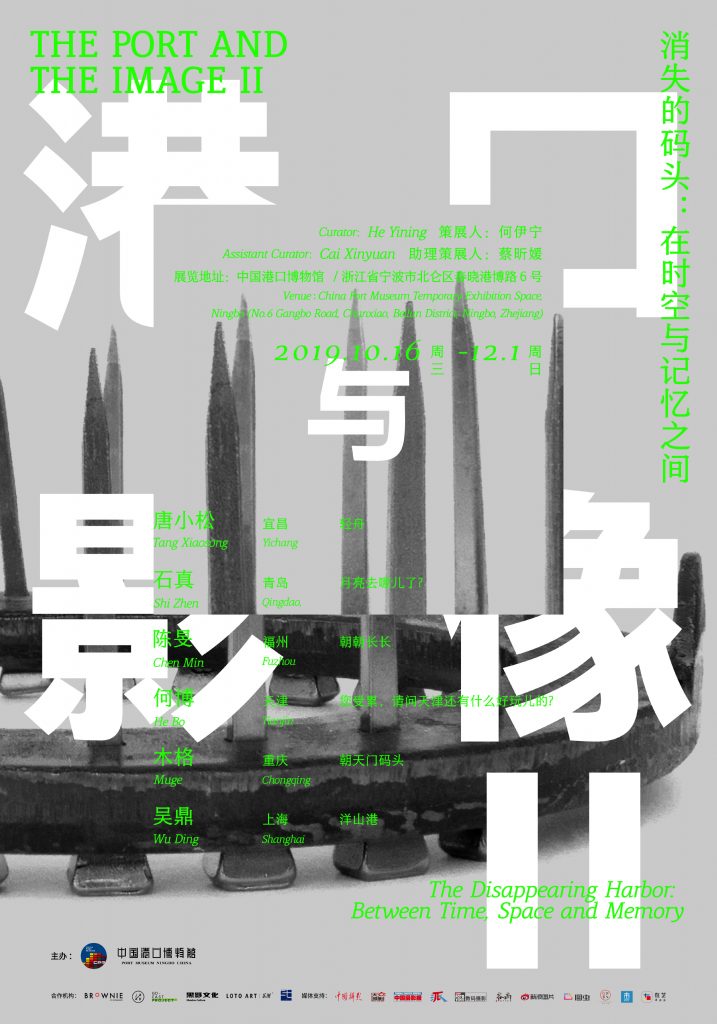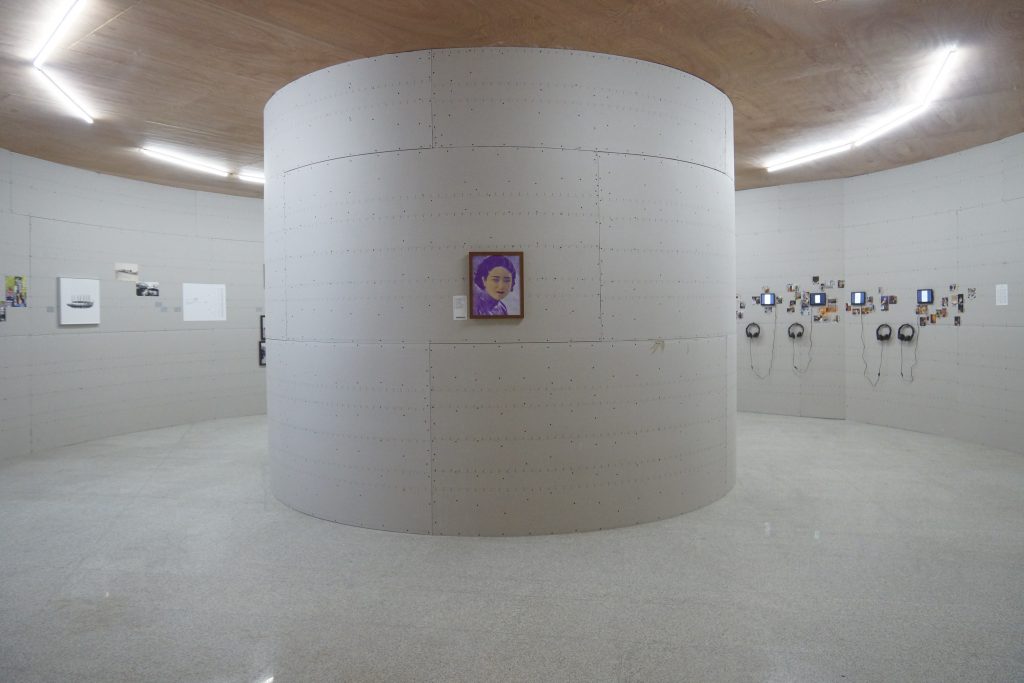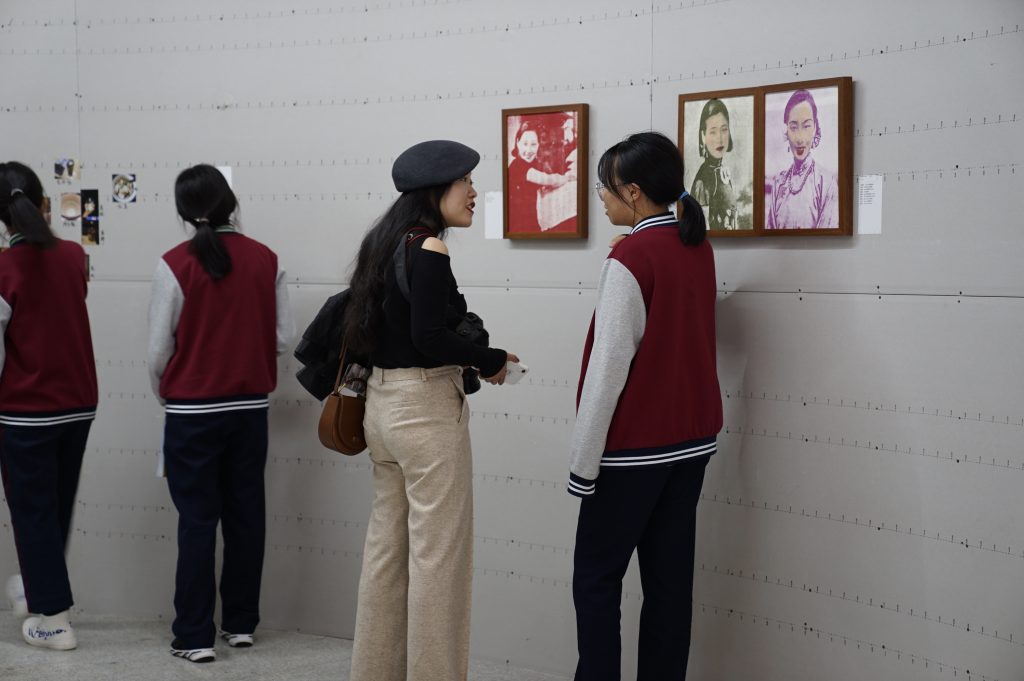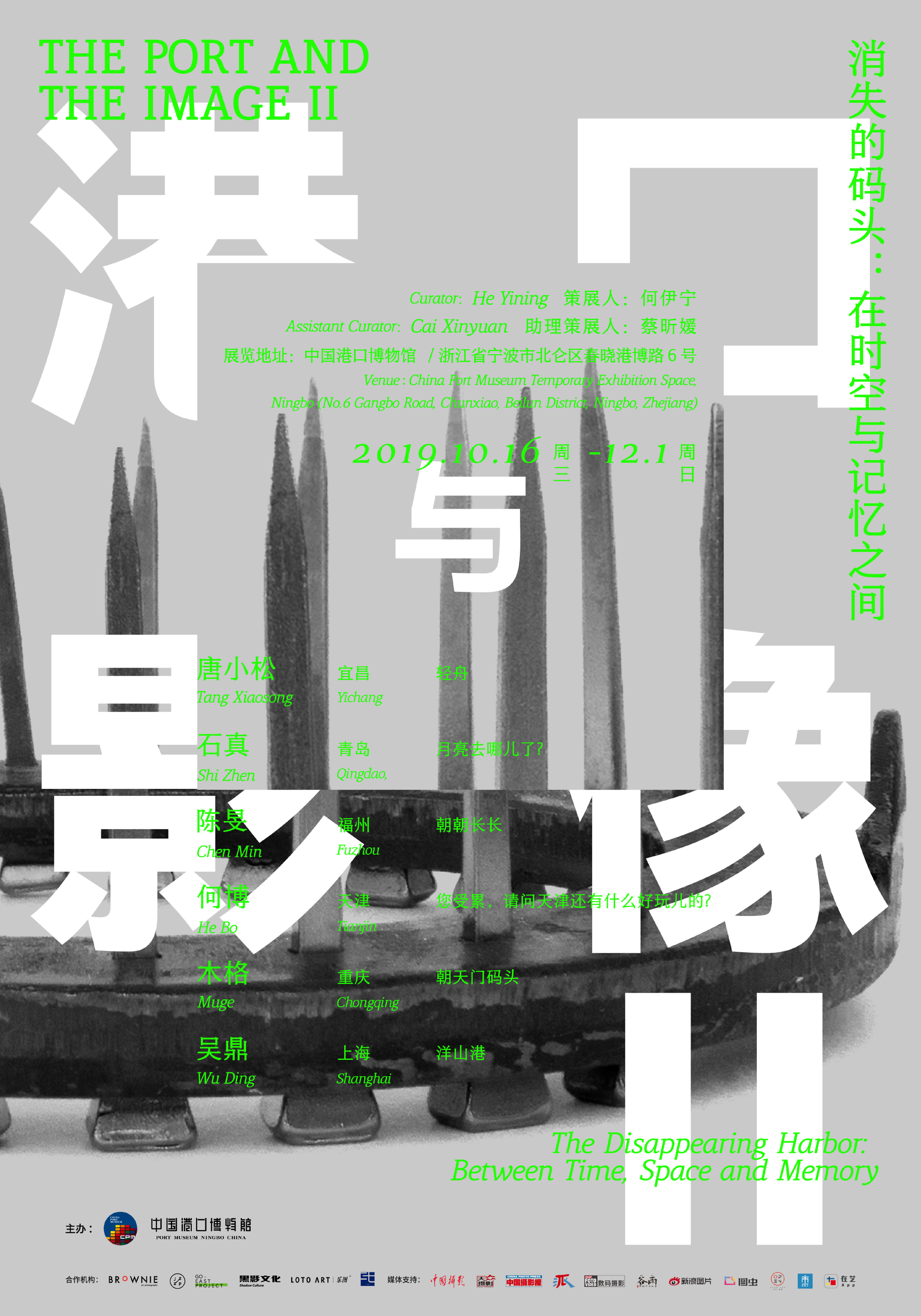
消失的码头:在时空与记忆之间港口与影像II
2019年10月16日——12月1日
参展艺术家: 陈旻、何博、木格、石真、唐小松、吴鼎
策展人:何伊宁
助理策展人:蔡昕媛
展览地点:中国港口博物馆(浙江省宁波市北仑区春晓港博路6号)
展览时间:2019年10月16日——12月1日
展览开幕:2019年10月16日09:00
开放时间:每周二至周日09:00-17:00,周一闭馆
主办方:中国港口博物馆
机构合作伙伴:BROWNIE Art Photography、假杂志图书馆、 Go East Project、黑影文化、乐图、三七影艺
媒体支持:《中国摄影》、《大众摄影》杂志社、《中国摄影报》、甬派、《数码摄影》、《摄影之友》、腾讯谷雨、新浪图片、蜂鸟网、图虫网、OPEN SEE、澎湃市政厅、澎湃Sixth Tone、艺术碎片、守候微光、在艺
关于展览
纵观全球港口发展的历史,码头作为集交通、贸易、仓储和社会生活等功能的建筑集合体,它的命运伴随着水文地质的变化、人类战争的影响、贸易重心的变迁,以及科技和生活方式的变革而不断演变。在全球化语境下,那些曾经在城市进程中扮演着重要角色的码头被转移、被拆除,抑或是被其他建筑功能所取代,成为了娱乐、休闲和社交的中心。
“港口与影像II”选择将消失的码头作为隐喻,试图从艺术家的创作出发,在探索港口的现代性与历史传统在建筑、空间、生态环境以及社会和文化方面的关系的同时,考察逐渐消失或即将消失,以及新生的港口文化对于个体和集体所产生的影响,并试图在历史和当代的语境中重新认识那些被遗忘的故事。
“港口与影像”项目的初衷是通过委任艺术家展开摄影和相关媒介的实践,来探索全球经济一体化背景下中国港口地区发展的现实环境,以及港城空间关系下衍生出的不同议题。在对传统意义上的“港口都市”,即宁波、泉州、广州、上海、香港、大连以及连接陆地和海上丝绸之路的重要城市南京展开视觉探索之后,“港口与影像II”在委任艺术家的范围、内容和呈现方式的多样化上予以拓展,本期项目考察的对象将从海港伸到沿江和内河港城,内容包含了针对港口和城市历史、文化的视觉再现,针对港口文化的变迁对于个体和集体经验的影响的叙述,以及针对“港口”作为一个特殊的空间所展开的创作。
第二期项目共邀请共七位来自中国和日本视觉艺术实践者,这些创作分别围绕着一个胶东半岛家族数代人与青岛的情感关联;宜昌及其相关的精神文化在中国社会、政治、文化的关系;重庆朝天门码头环境空间与人之间的关系;天津作为一个深受码头文化影响的港口城市,其休闲娱乐的变迁;福州马尾港的在地文化与个体经验之间的冲撞;针对日本横滨港历史事件的视觉化讲述;以及上海洋山港智能化码头与模块化世界之间的联想所展开。本届展览将呈现六位中国实践者的作品,唯一一组来自日本的作品将作为第三期展览的国际特别板块予以展示。
从青岛的家庭故事,到宜昌和重庆朝天门码头的诗意再现,从三座港口城市的视觉再现与口述历史,到上海洋山港的未来叙事,与其说“港口与影像”项目是针对中国重要港口的委任项目,不如它是一场探索之旅,邀请艺术家在广泛的视觉领域中积极拓展知识和形式语言的边界。“港口与影像II”展览的现场将按照这些作品之间潜在的逻辑,将传统的博物馆展览空间转化为一个开放的对话和交流的平台。本次展览也是宁波市北仑青年文化节的系列项目之一,配合展览的一系列线下及线上活动即将在宁波和其他城市陆续展开,以增进大众对港口及港口文化的理解。展览出版物由假杂志社设计和编辑,中国民族艺术出版社出版,于展览开幕同期推出。
博物馆简介:中国港口博物馆由国务院批准命名,位于浙江省宁波市北仑区春晓滨海新城,建成于2014年,是国家二级博物馆和国家3A级景区。中国港口博物馆以港口文化为主题,集教育、展示、收藏、科研、旅游、国际交流等功能于一体,具有国际性、专业性和互动性,是我国规模最大、等级最高的港口专题博物馆。中国港口博物馆是研究港口历史 , 传承港口文化、传播海洋文明的重要基地,是新世纪海上丝绸之路的重要文化支点。
The Port and the Image II
The Disappearing Harbor:Between Time,Space and Memory
Artists: Chen Min,He Bo,Mu Ge,Shi Zhen,Tang Xiaosong,Wu Ding
Curator:He Yining
Assistance Curator:Cai Xinyuan
Venue: China Port Museum Temporary Exhibition Space, Ningbo (No.6 Gangbo Road, Chunxiao, Beilun District, Ningbo, Zhejiang)
Duration: 2019.10.16——2019.12.1,09:00-16:00
Every Tuesday to Sunday, Closed on Mondays
Exhibition Opening: 2019.10.16 09:00
About the Exhibition:
Throughout the history of the development of ports around the world, the fate of the harbor as an architectural complex that combines functions such as transportation, commerce, storage, and social life, etc. is constantly changing with hydrogeological transformations, the influence of war, the relocation of trade centers, and the evolution of technology and lifestyle. In the context of globalization, harbors that used to play an important role in the process of urbanization are being relocated, removed, or reassigned other architectural functions and turned into nuclei of entertainment, leisure, and social life. Starting from artists’ practices, the second edition of “The Port and the Image” project uses the disappearing harbor as a metaphor to explore the relationship between both the modernity and traditional heritage of the port and its architectural, spatial, ecological, social and cultural aspects, examine the influence of the diminishing harbor culture on individuals and groups, and rediscover forgotten stories in historical and contemporary contexts.
The mission of “The Port and the Image” is to commission artists’ projects (in photography and related media) in order to explore the realities of the development of Chinese port districts in the context of global economy and the new problems that have arisen with the current spatial relationship between ports and urban spaces. Having completed a visual investigation of “port cities” in the traditional sense—including Ningbo, Quanzhou, Guangzhou, Shanghai, Hong Kong, and Dalian—and Nanjing, an important city that connects the inland and maritime sections of the Silk Road, “The Port and the Image II” has broadened the scope and diversity of commissioned artists, contents, and methods of presentation. This year’s project has expanded the subject of the investigation to include inland port cities. The contents include visual representations of the histories and cultures of ports and cities, narratives on the influence of the evolution of port culture on individuals and groups, and creative practices that focus on the “port” as a unique space.
“The Port and the Image II” has commissioned seven visual artists from China and Japan. Their works explore a wide variety of subjects, including the emotional connection between Qingdao and a family from the Jiaodong Peninsula over several generations; the relationship between Yichang (and its spirit) and the Chinese society, politics, and culture; the relationship between the environment and the everyday life of local residents at Chongqing’s Chaotianmen Dock; the evolution of the entertainment industry in Tianjin, a port city deeply influenced by harbor culture; the clash between local culture and personal experience at Fuzhou’s Mawei Port; visual accounts of historical events that took place at the Port of Yokohama in Japan; and associations between the intelligent harbor of Shanghai’s Yangshan Port and a modularized world. As an overview, this essay will start from the concepts of the exhibition and the artworks and proceed to examine the complex influence of the “disappearing harbor” on cities, communities and individuals in changing times, as well as the potential it has manifested in the era of high technology and artificial intelligence. The exhibition will present the works of six practitioners from China. The only body of works from Japan will be showed as a special section of the Port and the Image III in 2021.
From the family story in Qingdao to the poetic representations of Yichang and Chaotianmen, from the individual narratives of three port cities to the futuristic portrayal of the Yangshan Port, “The Port and the Image” is not so much a project on major port cities in China as a journey of exploration; it encourages the artists to expand the boundaries of intellectual and formal language in a broad visual field. The exhibition of “The Port and the Image II” will turn the traditional exhibition space of the museum into an open platform for dialogues and communications based on the inner connection between the artworks. A series of related events both online and offline will also be held in Ningbo and other cities with the aim of promoting the public’s understanding of ports and port cultures. The exhibition catalogue will be designed and edited by Jiazazhi Press and published by China Nationality Culture Press Co., Ltd.
About the Museum:
The China Port Museum was founded in 2014 in Ningbo, Zhejiang. It is sanctioned by the State Council and classified as a second-grade national museum and an AAA tourist attraction. With a focus on port culture, the museum combines functions such as exhibition, education, collection, research, tourism and international exchange. As a global, professional, and interactive institution, the China Port Museum is the largest and highest-ranked museum in China that specializes in ports and port culture. The museum is dedicated to the research of the history of Chinese ports, the preservation of the heritage of port culture, and the teaching of maritime civilization; it also serves as an important cultural fulcrum on the maritime Silk Road of the new century.












Reply